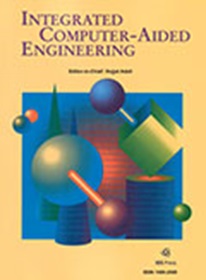一个可解释的半个性化联邦学习模型
IF 5.3
2区 计算机科学
Q1 COMPUTER SCIENCE, ARTIFICIAL INTELLIGENCE
引用次数: 3
摘要
使用批处理学习训练模型需要在存储库中存储统一的数据。这种方法是侵入性的,因为用户必须暴露他们的隐私,并通过将敏感数据发送到中央实体进行预处理来交换敏感数据。与前面提到的集中式方法不同,通过联邦学习(FEDL)机制训练智能模型可以使用分散的数据进行。此过程确保用户或组织可以管理敏感信息的隐私和保护,为所有用户采用单一的通用模型。该模型应对合作训练数据集采用平均聚合方法。这引起了对这种通用方法的有效性的严重关注,因此,对于一般的FEDL架构的有效性。一般来说,它使单个用户的独特需求扁平化,而不考虑要管理的本地事件。本文提出了一种创新的混合可解释半个性化联邦学习模型,该模型利用Shapley值和Lipschitz常数技术来创建个性化智能模型。它基于每个用户需要以联邦格式处理的需求和事件。解释是可解释系统的各种特征,在特定说明的情况下,这些特征有助于得出结论,并在局部和全局层面上提供模型的功能。建议只对那些变化程度被认为对其功能的演变相当重要的特性进行再训练。本文章由计算机程序翻译,如有差异,请以英文原文为准。
An explainable semi-personalized federated learning model
Training a model using batch learning requires uniform data storage in a repository. This approach is intrusive, as users have to expose their privacy and exchange sensitive data by sending them to central entities to be preprocessed. Unlike the aforementioned centralized approach, training of intelligent models via the federated learning (FEDL) mechanism can be carried out using decentralized data. This process ensures that privacy and protection of sensitive information can be managed by a user or an organization, employing a single universal model for all users. This model should apply average aggregation methods to the set of cooperative training data. This raises serious concerns for the effectiveness of this universal approach and, therefore, for the validity of FEDL architectures in general. Generally, it flattens the unique needs of individual users without considering the local events to be managed. This paper proposes an innovative hybrid explainable semi-personalized federated learning model, that utilizes Shapley Values and Lipschitz Constant techniques, in order to create personalized intelligent models. It is based on the needs and events that each individual user is required to address in a federated format. Explanations are the assortment of characteristics of the interpretable system, which, in the case of a specified illustration, helped to bring about a conclusion and provided the function of the model on both local and global levels. Retraining is suggested only for those features for which the degree of change is considered quite important for the evolution of its functionality.
求助全文
通过发布文献求助,成功后即可免费获取论文全文。
去求助
来源期刊

Integrated Computer-Aided Engineering
工程技术-工程:综合
CiteScore
9.90
自引率
21.50%
发文量
21
审稿时长
>12 weeks
期刊介绍:
Integrated Computer-Aided Engineering (ICAE) was founded in 1993. "Based on the premise that interdisciplinary thinking and synergistic collaboration of disciplines can solve complex problems, open new frontiers, and lead to true innovations and breakthroughs, the cornerstone of industrial competitiveness and advancement of the society" as noted in the inaugural issue of the journal.
The focus of ICAE is the integration of leading edge and emerging computer and information technologies for innovative solution of engineering problems. The journal fosters interdisciplinary research and presents a unique forum for innovative computer-aided engineering. It also publishes novel industrial applications of CAE, thus helping to bring new computational paradigms from research labs and classrooms to reality. Areas covered by the journal include (but are not limited to) artificial intelligence, advanced signal processing, biologically inspired computing, cognitive modeling, concurrent engineering, database management, distributed computing, evolutionary computing, fuzzy logic, genetic algorithms, geometric modeling, intelligent and adaptive systems, internet-based technologies, knowledge discovery and engineering, machine learning, mechatronics, mobile computing, multimedia technologies, networking, neural network computing, object-oriented systems, optimization and search, parallel processing, robotics virtual reality, and visualization techniques.
 求助内容:
求助内容: 应助结果提醒方式:
应助结果提醒方式:


